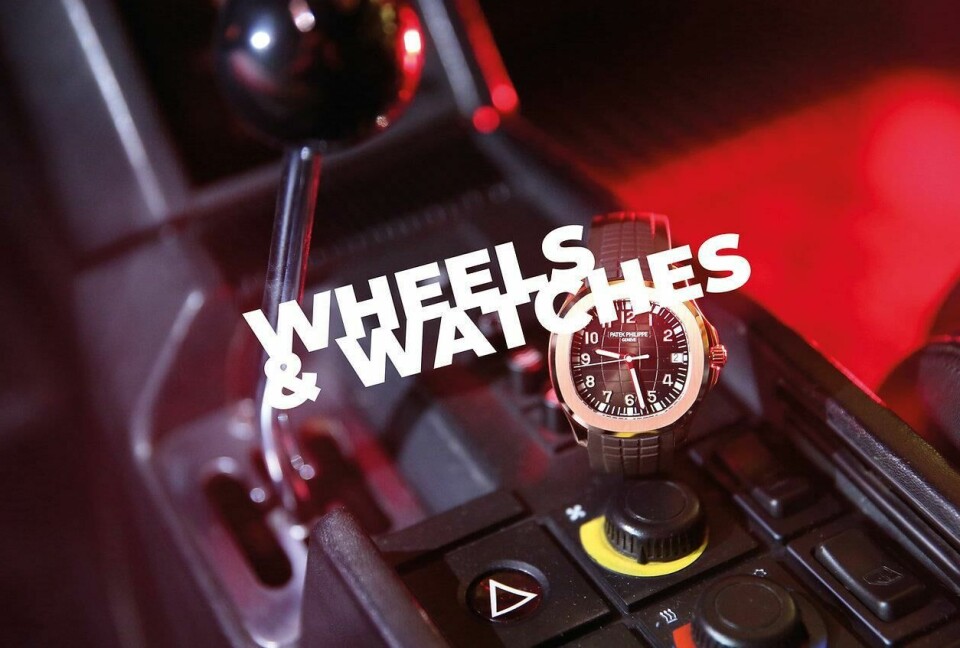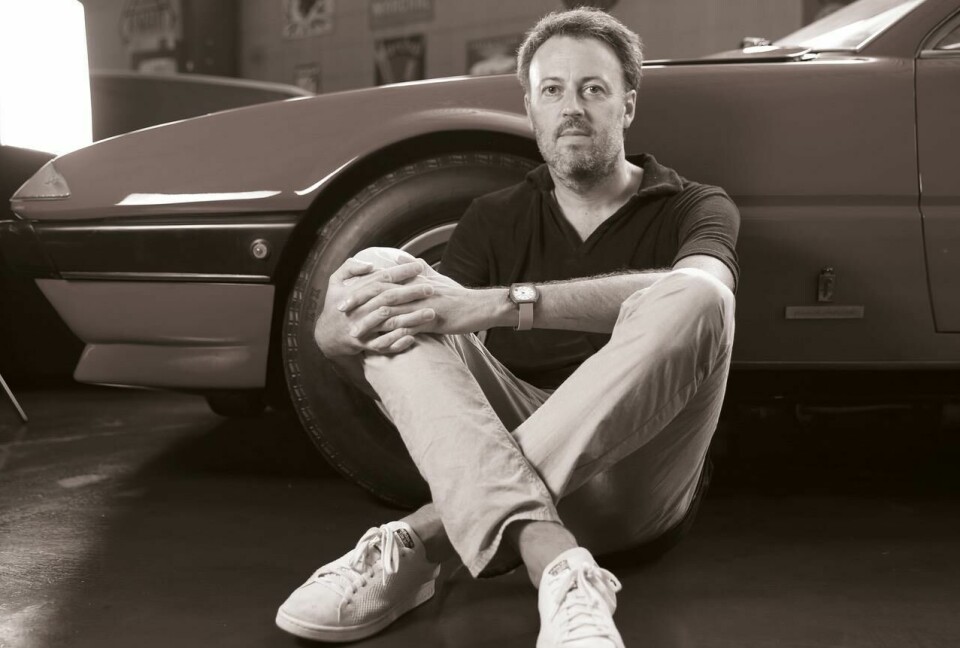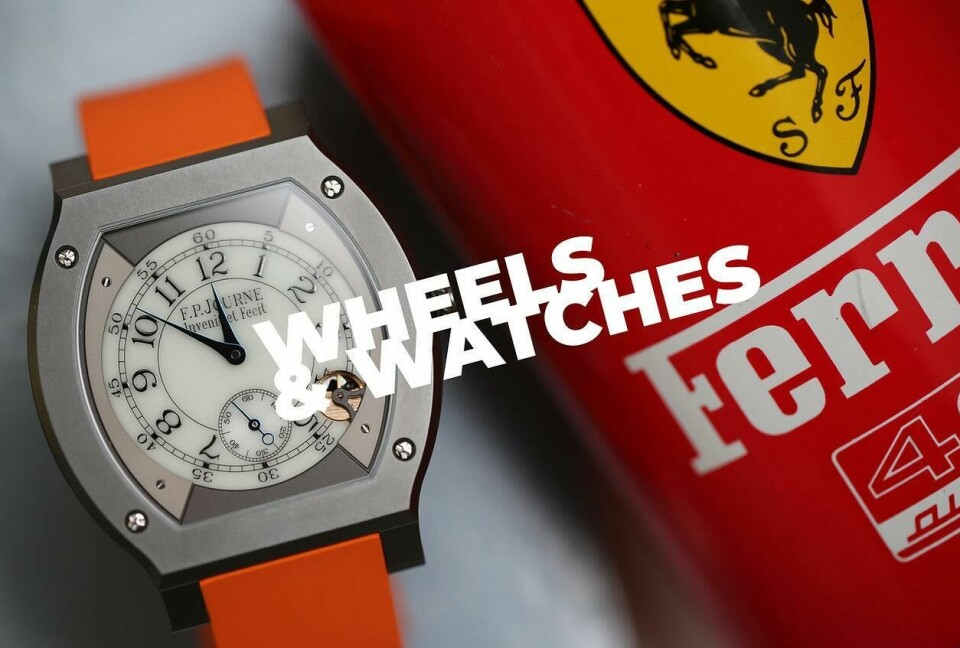
Book review: Wheels & Watches
“Cars and watches have marked the evolution of technology and to a certain extent, that of design, fashion and society” – Flavio Manzoni
Wheels and Watches chronicles the parallels between two adjacent fields of design, documenting the personal stories of numerous car designers, watchmakers and many other players across both spaces.
The author, Oriol Vilanova, spent his early career as a designer, working primarily on exteriors at the likes of Hyundai, Mercedes and Kia, and eventually moved into a consulting role at Ferrari for around seven years. Since then, he has grown his CV further as a photographer, art director and publisher of Gentlemen Drive magazine. Even the most casual of glances at his social media make clear a passion for design – be it an object powered by an internal combustion engine or a complicated Swiss movement.

Vilanova’s affection for cars and watches follows a well-trodden path of travelling the world, meeting interesting characters and building sentimental value. Both are objects with which an attachment is built over time – often during poignant events, whether planned or spontaneous.
By all accounts, Vilanova was always going to end up an aficionado. His father is a vintage car enthusiast – driving a 1933 Ford V8 from Barcelona to Moscow in 1989 – and was gifted a Chopard Mille Miglia to celebrate his 25th wedding anniversary. (Vilanova jr. later took part in the historic Italian rally with his father’s Ford V8, and no doubt wearing his own Chopard).
Vilanova got his first car at the age of 14 and later – after his first paycheck as a car designer – his first proper watch: an Omega Speedmaster Mark III from the ‘70s. And so began the journey that would lead to this book. With his professional background marrying perfectly with his interests away from work, this is a man that walks the walk and talks the talk when it comes to cars and watches.
Vilanova opens the book by setting the scene, leaning not on shared design principles but philosophy: “They say that competition was born as soon as the second vehicle was made, and that competition immediately needed a system to know who was going faster. Thus was born one of the most interesting associations of two diverse but equally exciting worlds. Cars and watches.”
The format that follows is formulaic and flows well, with each character detailing a particular car and watch that sits close to their heart. Interspersed with close ups of car, watch and driver, there are some touching stories of how these objects came into their life and the crossover in design.
There is also a pleasing mix of brands and no clear affiliation to one particular family. The very nature of this book does however mean there is an inherent fascination of luxury and what these objects mean beyond the (often hefty) price tag. Among the designers is a smattering of other like-minded folk, from racing drivers and artists to writers, collectors and even family members.
Copy is broken up by some lovely images of cars, watches and their respective storytellers, but also some simple line illustrations of a Lamborghini Countach and a 911 SC Targa. The occasional inspirational quote also adds variety and puts the stories of the book into perspective; one that stuck with us was from William Penn: “Time is what we want most, but use worst.”
“Watches always stood out, somehow embodying the daring vision I have always had [with] cars”
The level of access is impressive and Vilanova tells us it took around two years to compile these more than 50 stories. There are some familiar names to those in car design. Seriously big names, in fact.
Beyond the foreword from Ferrari’s Flavio Manzoni there are sections by Walter de Silva; Alfa Romeo design director Alejandro Mesonero-Romanos, BMW Group VP of design Adrian van Hooydonk, Maserati’s Klaus Busse; Jorge Diez of SEAT; Chris Bangle; Mitsubishi design director Alessandro Dambrosio; Fabrizio and Giorgetto Giugiaro; Zagato chief designer Norihiko Harada; ex-Ferrari designer Leonardo Fioravanti; Steffan Koehl, director of advanced exterior design at Mercedes-Benz; and the late Paolo Pininfarina and Marcello Gandini.
There is a touching note towards the end thanking the ‘protagonists’ of the book, recognising that while “some are more known than others” they all “share a passion to create […] and for mechanical movements.”

For a book so closely linked with luxury there are some unexpected cars: a first-gen BMW Z3, a 1992 Toyota Celica Turbo “Carlos Sainz”, and a Fiat Punto-esque 1990 concept car created to align with the Bvlgari watch brand. A personal favourite is the 1998 Nissan Le Mans racer, the R390 GTI, which according to its owner “regularly hits the road.” And, believe it or not, there is an ode to the – let’s say “heavily discussed” – Fiat Multipla.
Watch-wise, it is the humble Seiko ‘Pogue’ and it’s radiant yellow dial and Pepsi bezel (a combination that should not work) which stands out among the objectively more alluring F.P Journes and vintage Longines. And what of one of the brightest names in car design: the late Marcello Gandini. Patek, Vacheron, Rolex perhaps? Nope. Swatch. “Their watches always stood out, somehow embodying the daring vision I have always had [with] cars,” Gandini writes.
Flicking through, we would have liked to see a little more variation in format as it did begin to feel a little predictable. However, reading cover to cover from start to finish there is a wide variety of image orientation, colour and collaging. Some of the paragraphs seem to be misaligned in our first edition copy of the book, but this is splitting the finest of hairs.
If this is a topic of interest, there are not many dedicated hardback books to offer comparison. Perhaps the only other of note is Drive Time: Watches Inspired by Automobiles, Motorcycles, and Racing by Aaron Sigmond, with a foreword by Jay Leno and none other than Jean-Claude Biver to close.
Is Wheels & Watches worth the money? At €79.90 this is not an inexpensive book, but it’s unlikely to be bought on a whim. If cars and watches are subjects of interest, this book will surely resonate and – let’s be frank – enthusiasts in this space are not usually afraid to cough up. There is a decent weight to it, too, and despite the slightly garish font on the front cover should not look out of place alongside your other coffee table books.
At the very least, there is an abundance of imagery – beautiful watches, unique concept cars and well-loved classics – that will be sure to keep you seated long after your beverage of choice has run dry. Ultimately, there are very few places to gain the same kind of insight on what is one of the very nichest of subjects.













